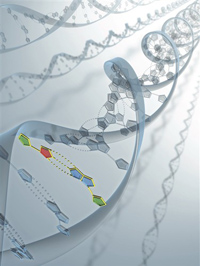What is the evidence for Intelligent Design?
Intelligent Design (ID) is based on the observation that natural and living systems show clear evidence of having been designed. To be precise, ID says that ‘certain features’ of the universe show evidence of design. ID implies that the whole universe is designed, but that the evidence for design is more obvious in some areas than in others. This most certainly does not imply, as some continue to assert, that ID only deals with gaps in our knowledge. Actually, the opposite is true. ID deals, not with what we don’t know, but with what we do know.
Intelligent Design is an example of the science of design detection – how to identify patterns arranged by an intelligent cause for a purpose. Design detection is used in a number of scientific fields, such as anthropology, crypto-analysis, forensic science which seek to explain the cause of events such as a death or fire, and the search for extra-terrestrial intelligence (SETI). The inference that, for example, the biological information contained in DNA may be the product of an intelligent cause can be tested and evaluated in the same way that scientists test for design in other sciences.
So how and where do we detect design? Let’s take the ‘how’ question first. We know instinctively how to distinguish between designed systems and those that are randomly assembled. We do not ever question whether the thousands of gadgets we use every day are designed – it is obvious that they are. We also recognise collections of things that have been randomly assembled, though the objects in the collection may be individually designed. For example, a rubbish heap is usually a random collection of designed objects.
More importantly, scientists and engineers have identified technical criteria for design. Although these involve fairly complex calculations involving information and probability theory, the conclusions are relatively straightforward. Design is detectable when there is low probability and high specificity. This means, essentially, that an object or system can be said to be designed when there is a very low probability of it arising by chance or as the result of an existing law or process, and when it also matches an existing pattern or fulfils a specific purpose.
 It is easier to detect design that to describe how we recognise it! But we should be clear that design is not just a subjective decision. It has objective, scientific criteria which distinguish it from the random or merely repetitive.
It is easier to detect design that to describe how we recognise it! But we should be clear that design is not just a subjective decision. It has objective, scientific criteria which distinguish it from the random or merely repetitive.
Where, then, in natural and living systems can we detect design? Actually it is not difficult. When we apply the criteria for design to natural and living systems, the existence of design is obvious. For example, the universal constants, such as the very precise values of the forces which govern gravity, electricity, magnetism, and the various types of chemical and nuclear bonds, appear to be finely tuned to make our planet able to sustain life and suggest intrinsic design. The specified complexity of some living systems, like the eye, the ear or the blood clotting system, is a further clear indicator of design.
 But the most compelling argument for design lies in the information content of DNA, the molecule in every living cell which carries much more data that most modern software programmes. We know that functional information can only arise from an intelligent source and the clear implication of the information content of DNA is that it was assembled by a designing intelligence.
But the most compelling argument for design lies in the information content of DNA, the molecule in every living cell which carries much more data that most modern software programmes. We know that functional information can only arise from an intelligent source and the clear implication of the information content of DNA is that it was assembled by a designing intelligence.
Dr Alastair Noble
Director of the Centre for Intelligent Design
April 2016
Image credits:
Thumbnail - © Nick Youngson - link to - http://nyphotographic.com/ The image is licensed for reuse by its creator under a Creative Commons Attribution-ShareAlike licence.
Article images - licence to use held by C4ID